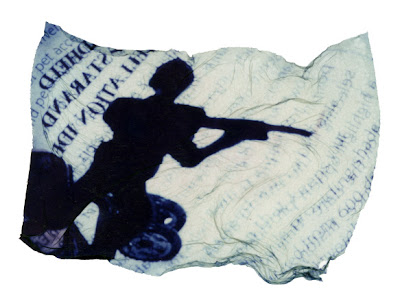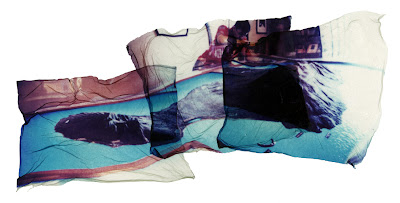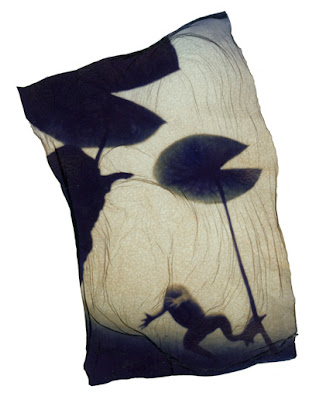
Another productive week, but still not much to show you. I’m in the middle of making several multi-image panoramic Polaroid lifts. The previous lift has to be completely dry before placing the next photo, which means that I can do one section per day. I finished a couple of them today, several more will be finished in the near future.
Unfortunately, all this will need to be put on hold for a few days, because I’m traveling to Michigan to visit family over the July 4th holiday. I’m leaving tomorrow (July 1) and returning on Friday the 6th. So, expect another week with nothing much to show you. After next week I’ll be able to scan some of the finished pieces to post them here. Of course, I’ll be bringing my toy cameras and plenty of film to Michigan, so I won’t be completely stopping work while I’m away.
The Polaroid lifts I’m working on now are interesting, although I’m not finding them all to be as successful as I would like. I made several panoramic scenes at the Field museum, and the lifts are of these scenes. The simpler ones seem to be the most successful. The busier images don’t work as well as Polaroid lifts. I’ve got 10 panoramic scenes in progress, which will likely be narrowed down to 5-6 that I think are good enough to show.
As for technique, I’ve discovered that the temperature of the water you do the transfer in should be cold. I’d been using warm water, based on instructions I’d read. Cold water makes the image a little more difficult to work with, but the benefit is that the gelatin which holds the image to the photo paper quickly returns to a semisolid state, making it much easier to remove and dispose of.
I’ve hit a bit of a snag with the Polaroid 669 film. I started work on a multi-image piece that relies a lot on color to be successful. Unfortunately, Polaroid 669 film is notorious for having a distinct cyan color shift. I have a slide that is bright green, but when I make a Polaroid of it, it turns out bright blue. I put a bright green gelatin filter in along with the slide, but his exposure came out a slightly greenish bright blue, not much different from the first one. So, this project is on hold temporarily, until I figure out what to to. I have an idea, but I’ll need to wait until I shoot a roll of slides to work with.
I also experimented a bit with some Polaroids I wasn’t using for anything else. I found that you can do a lift onto an old photograph. I also discovered that you probably wouldn’t want to. The photo and the lift compete for attention, as you can see here.









